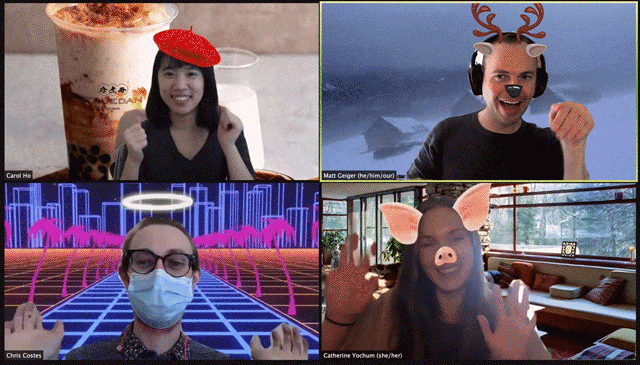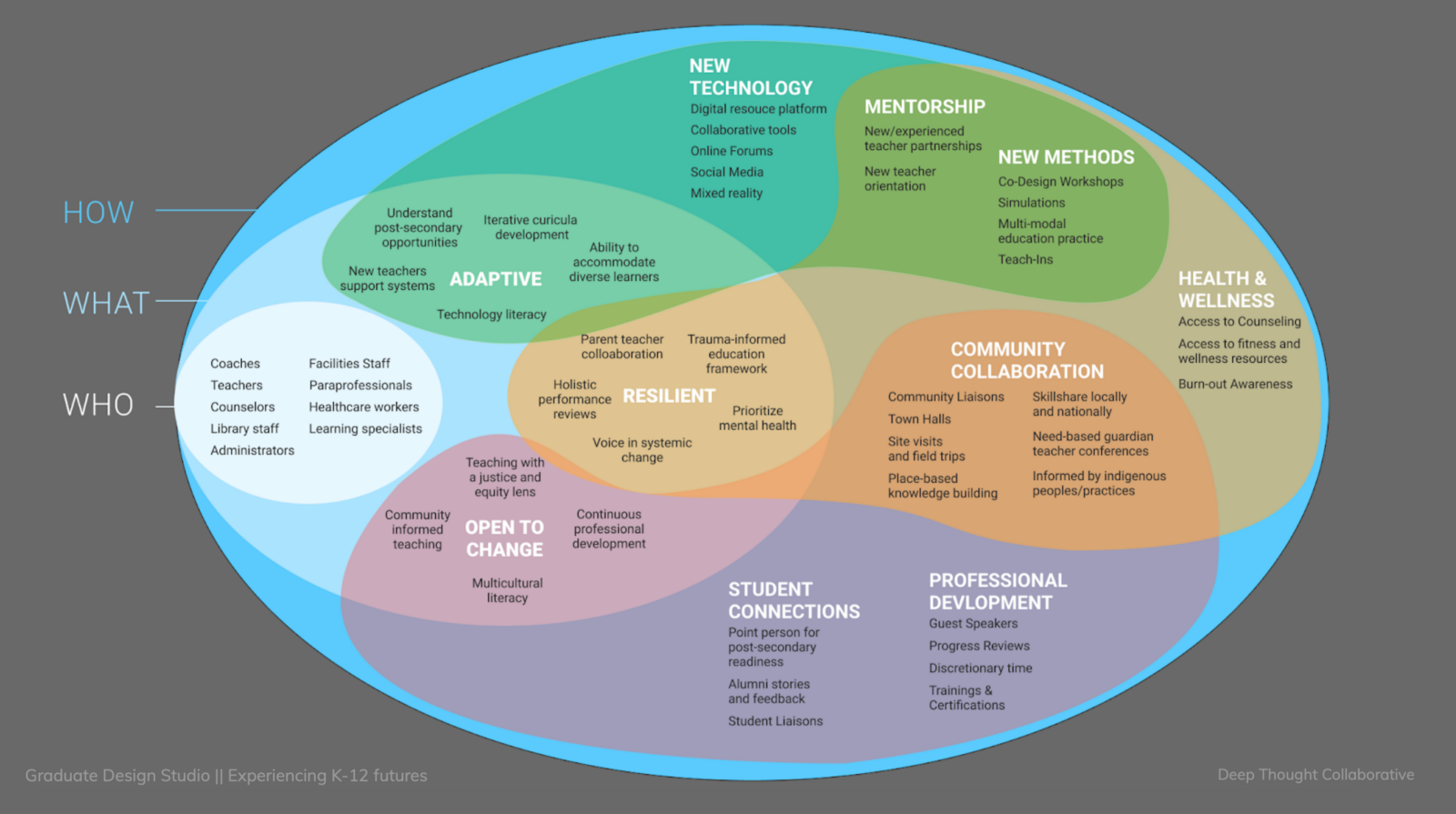This week, our team posted a bio on our course homepage. Chris put it best, “we cute as hell, just saying:”
Making the best of remote collaboration
We also drafted a team contract to establish expectations and roles, among these are:
Goals for this project:
Sharpen our skills for…
Research-based design
Remote collaboration
Providing meaningful artifacts for a client
Something great for our portfolios
Expectations
Meetings scheduled to avoid conflict and maximize productivity
Established deadlines
Delegation of tasks
Regular updates and communications for peers
Time to celebrate accomplishments
Policies:
Commitment to ongoing research to strengthen and refine ideas, concepts.
Flexibility and understanding (because there’s still a pandemic and bad things can and will happen)
Consequences and conflict:
Call people in, not out. If something is not going well, we all have a problem and can work together to solve it.
Transparency: let’s communicate when there are problems, we all have valuable perspectives and may recognize something that others do not
When possible, table discussions if we cannot easily make decisions. Decide when/if to address problems as a group or between group members
Custom rules for meetings:
Rotation of responsibilities so folks don’t burn out on repetitive tasks.
In addition to structuring our collaborative efforts, we also completed a first draft of our research team’s territory map.
First draft version of territory map for PPS, based on the brief provided by Prospect Studio
Our professor, Peter Scupelli provided feedback on our initial presentation draft:
Need to include systems level goal
Need to specifically include equity-centered systems and outcomes
Leverage personas and vignettes to aid in choosing area of focus
Recommend researching the current state with a focus on equity
To improve the focus and process of our research, we’re also reviewing text from How To Future, a book by Madeline Ashby and Scott Smith. Chapter 3 describes the process for sensing and scanning information, which will be useful for our secondary research and literature review, as well as synthesizing insights from primary research and participant interviews.
Since the scope of this project is fairly broad and also because we are working on it for 15 weeks, we’ve also decided to adopt the project management tool, Trello to aid us in tracking our individual and collective progress, assign/delegate tasks, and note passing key milestones.
Using the feedback we received from our professor and our excellent TA, Sefania La Vattiata, we set more specific goals for completing our territory map.
Summary of Decisions/Surfacing Perceived Alignments:
Converged from 3 slices to one sections of the outcomes. Current Territory Map should focus exclusively on Educator Essential: Adaptive, resilient and open to change
To frame our future, we are currently considering the possibilities and methods that adults can learn how to partner with students about what happens after graduation/their long term goals
New Format for territory map based on Hajira’s work. From the center outward: Who-> What -> How -> Future experiences
Future experience should be structured within the futures scenario we are currently exploring
For the future experiences outer most rim, each scenario ideally aligns with an accompany assumption or question about the present. ie Future: VR explorations of proposed new school house Past: How/Can people see these plans today?
To do list for Wednesday’s Presentation:
Update deck with new (1) focus, (2) research, (3) Territory Map/Reasoning
Add Section in the deck about for the proposed Future Scenario we are exploring
Deck should be finished no later than Wednesday at 11am, share any changes
Which area are we truly focussing on? Educator Essentials? Graduate Portrait? We’re a bit hung up on the adaptive, lifelong learning? Our hope is that through this process, it will be easier to narrow our focus to the educator essentials.
UPDATE:
Our team completed their second revision of the territory map for the Educator Essential vision of Adaptive, Resilient, and Open to Change.


